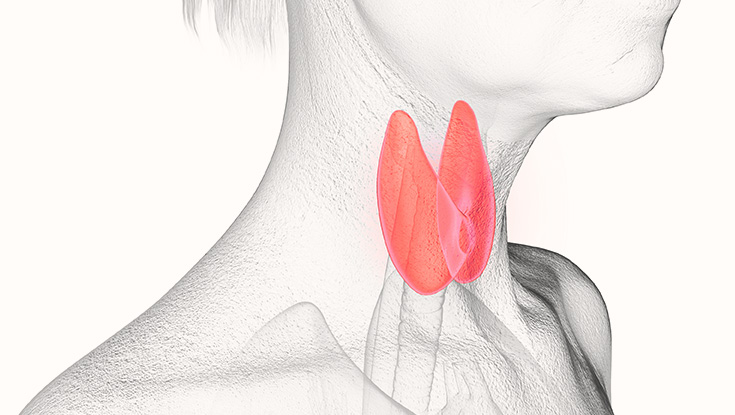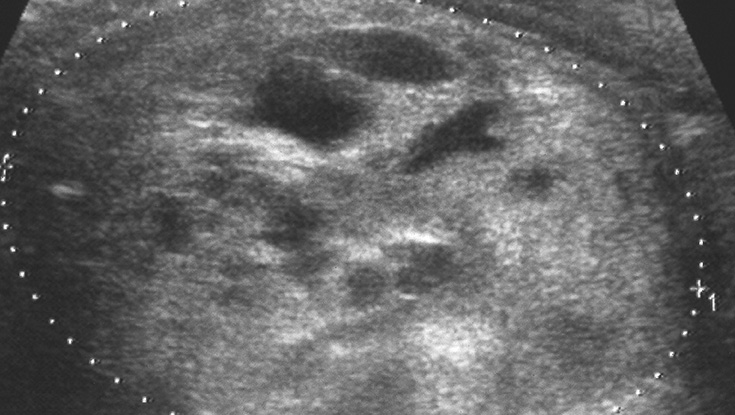What is Thyroid Cancer?
Thyroid cancer refers to all malignant tumors that arise in the thyroid gland.
There are various types of thyroid cancer,
which are classified based on the origin and appearance of the cells.
Thyroid cancer, which ranks as the most common cancer in terms of incidence in South Korea, tends to grow slowly and often doesn't present painful symptoms, earning it the nickname "the good cancer."
However, due to the absence of symptoms in the early stages, it is difficult to detect early.
By the time symptoms appear and surgery is performed, cancer has often already spread to the lymph nodes as well as the thyroid.
Symptoms of Suspected Thyroid Cancer
The nodule is large or has recently increased in size.
When a large nodule causes breathing difficulty or trouble swallowing.
When there is a mass in the thyroid accompanied by changes in the voice.
When the nodule is attached to surrounding tissues and does not move easily.
When the nodule feels very hard to the touch.
When a lymph node is palpable on the same side as the thyroid nodule.
There is a family history of thyroid cancer and a nodule is felt in the thyroid.
Types of Thyroid Cancer
Papillary Thyroid Cancer
Accounts for 80% of all thyroid cancers
Primarily spreads through lymph nodes
Grows very slowly and has a good prognosis
Even if it recurs, treatment is relatively easy
Diagnostic Method arrow_right_alt Fine-Needle Aspiration (FNA) Biopsy
Follicular Thyroid Cancer
Accounts for 20% of all thyroid cancers
Grows slowly and has a good prognosis
Spreads through blood vessels
Primarily occurs in middle-aged and older individuals
Diagnostic Method arrow_right_alt Definitive diagnosis through surgical resection
Medullary Thyroid Cancer
Accounts for 1-2% of all thyroid cancers
Can be cured if detected early and treated with surgery
Chemotherapy is not effective
Originates from the C cells of the thyroid
Primarily occurs in middle-aged and older individuals
Diagnostic Methods arrow_right_alt Fine-Needle Aspiration (FNA) Biopsy, Blood tests
Anaplastic Thyroid Cancer
Accounts for less than 1% of all thyroid cancers
Does not respond to chemotherapy
Has the poorest prognosis, with most patients dying within 6 months
Easily spreads, often causing compressive symptoms
Diagnostic Methods arrow_right_alt Fine-Needle Aspiration (FNA) Biopsy, Core Needle Biopsy
Types of Thyroid Cancer
Papillary Thyroid Cancer / Follicular Thyroid Cancer |
Stage 1 - The cancer has not spread to other organs. Stage 2 - The cancer has spread to other organs, such as the lungs or bones. |
Papillary and Follicular Thyroid Cancer |
Stage 1 - The tumor is 4 cm or smaller, with no lymph node involvement or spread to other organs. Stage 2 The tumor is 4 cm or smaller, but there is lymph node involvement. The tumor is larger than 4 cm but has not spread beyond the thyroid capsule, with no spread to lymph nodes or other organs. The tumor has invaded only the strap muscles of the neck. Stage 3 - The tumor visibly invades thyroid tissue and surrounding structures (e.g., subcutaneous soft tissues, larynx, trachea, esophagus, recurrent laryngeal nerve). Stage 4 - The cancer has spread to other thyroid tissue or distant organs. |
Medullary Thyroid Cancer |
Stage 1 - The tumor is 1 cm or smaller, with no lymph node involvement or spread to other organs. Stage 2 - The tumor is larger than 1 cm but smaller than 4 cm, with no lymph node involvement or spread to other organs. Stage 3 - Regardless of the tumor size, there is lymph node involvement, but no spread to other organs. Stage 4 - The cancer has already spread to other organs. |
Anaplastic Thyroid Cancer |
All cases are classified as Stage 4, |
Thyroid Cancer Diagnostic Methods


Diagnostic evaluations may include: Medical history and physical examination Chest X-ray, Blood tests (such as thyroglobulin levels) Whole-body scan using radioactive iodine Ultrasound Additional imaging tests such as CT (Computed Tomography) or PET (Positron Emission Tomography) may also be performed when necessary.
It’s completely understandable to feel anxious or uneasy while waiting for test results.
However, delaying tests until symptoms appear can allow the cancer to spread, potentially making treatment less effective.
Regular screenings help detect abnormalities early.
If anything unusual is found, beginning treatment at an early stage is the best way to protect your health and improve your quality of life as a thyroid cancer patient.
Privée Special